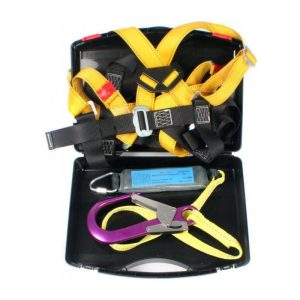Description
Evacuation Chairs
Do you know there is a legal requirement for responsible persons to ensure the safe evacuation of non-ambulant persons in the event of an emergency?
There is a common misunderstanding that it is the responsibility of the emergency services to ensure everyone evacuates from a building safely!!
The Facts
Todays law stipulates that it is no longer the duty of the Fire Service to make sure the workplace is safe. The duty now lies with ‘the responsible person’
The responsibility is clearly with the building management or service providers to ensure there are suitable procedures in place to evacuate everyone including disabled people without relying on the fire service.
The responsible person must nominate a sufficient number of competent persons to implement procedures in so far as they relate to the evacuation of relevant persons from the premises.
Building managers should not be contemplating refusing entry to disabled people but should have plans in place that ensure the safe evacuation of all building users whether or not the fire service is available.
There is no document which states that disabled people should be left in a building to wait for the fire service during a fire. In fact, current legislative documents and standards state that it is the responsibility of the building management to ensure their safe escape by introducing suitable escape plans.
Where equipment is provided to assist in the evacuation of disabled people (e.g. evacuation chairs), it is important to ensure that’s its operational capability is maintained.
Applications
The Evacuation Chairs can be used on virtually all types of staircases where access is provided to upper and lower levels to safely evacuate non-ambulant persons.
- Public building
- Offices
- Retail premises
- Hospitals
- Educational establishments
- Aviation industry
- Marine industry
- Shopping centres
- Care industry
- Event management
- Emergency Services
- Personal use
Advantages of the Evacuation Chair
- Easily operated by one person
- Minimal training required
- Ready to use in seconds
- Four fixed wheels (no secondary wheels to deploy)
- No need to balance the chair at landing (improves safety)
- Simple deployment (no complicated clips or fastenings)
- Sturdy yet lightweight stylish design
- Descent is controlled by friction controlled custom-made high resistance belts in canvas reinforced with rubber
- Safety brakes on wheels
- Adjustable headrest
- Adjustable seat
- Quick release for lowering the handle
- Free standing facility
- Cover and wall bracket available
- Assists with compliance and good management
- Medical Devices Agency approved
- CE marked


























